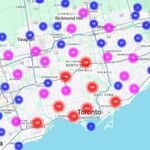It could be the end of the line for the TTC’s monthly pass.
For more than 40 years Toronto’s transit agency has been selling passes that allow customers unlimited monthly travel — first as a physical Metropass, and more recently as a feature of the Presto fare card system.
But in
a report going to the TTC board next week, agency staff recommend scrapping the monthly pass program and replacing it with “fare capping.” Under the proposed policy, customers would ride for free after reaching a certain number of paid trips each month.
According to staff, fare capping would be more affordable for customers because it would eliminate the burden of having to pay the full cost of a pass at the start of each month. It would also give users more flexibility by automatically granting free rides to anyone who exceeded the set number of monthly trips. Eliminating the need to opt in by buying a pass each month could be especially important because of the unpredictability of Torontonians’ travel habits during COVID-19.
TTC spokesperson Stuart Green said the aim of the proposed change is “to give our customers options that best suit their individual needs and circumstances.”
“Our focus now is on not only bringing existing customers back to public transit, but to attracting and retaining new riders too,” he said, and “modernizing our fare policies” is crucial to that goal.
As of December, TTC ridership was still only about 51 per cent of pre-pandemic volumes.
Staff are asking the board to endorse the fare capping idea in principle at its Feb. 10 meeting as part of the agency’s new five-year fare policy. A more detailed plan would come back to the board in May.
As part of the five-year plan, TTC staff also recommend increasing the discounts for seniors and youth so they align with the city’s Fair Pass program for low-income residents. Seniors and youth currently pay $2.25 for a single ride using Presto, while Fair Pass users pay $2.10. Aligning the discounts “would create a more equitable option for seniors and youth,” the report states.
Monthly passes have been a
mainstay of the TTC’s fare structure since 1980 but have become less popular in recent years. In 2015, more than 50 per cent of TTC customers used a Metropass, according to agency data. By 2019 it was less than 30 per cent, thanks in part to the introduction of the policy that allows riders to take an unlimited number of trips on a single fare in a two-hour window.
The cost to the TTC of switching to fare capping depends on where the agency sets the monthly threshold for free rides.




